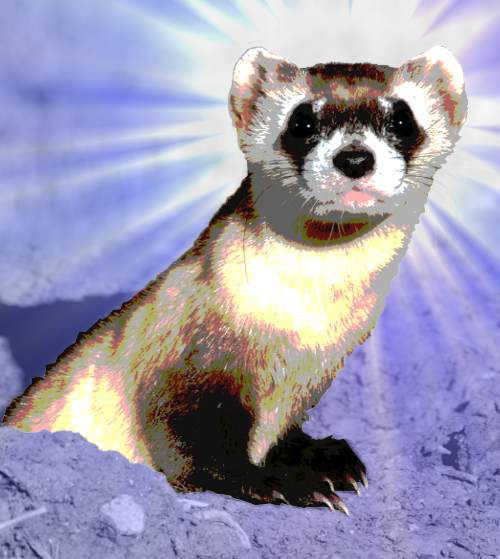Species revived by 20-year-old semen

Black-footed ferrets - a critically endangered species native to North America - have had genetically important offspring reproduced from the frozen semen of a ferret that has been dead for approximately 20 years.
The sire was one of the last 18 black-footed ferrets to exist in the world in the 1980s.
Samples of semen from back then have been carried all the way to birth, in a project to significantly increase the gene diversity of the endangered population.
“Our study is the first to provide empirical evidence that artificial insemination with long-stored spermatozoa is not only possible but also beneficial to the genetic diversity of an endangered species,” said David Wildt, a researcher from the Smithsonian Conservation Biology Institute (SCBI).
“What we've done here with the black-footed ferret is an excellent example of how sperm preservation can benefit species recovery programs.”
“The entire species survival depends on successful captive management to ensure healthy genetics over the next 100 years and to produce individuals for the reintroduction program,” says Black-Footed Ferret Reproduction Advisor Dr Rachel Santymire.
“To balance out these demands on the breeding program, we have to ensure that each individual ferret passes its genes on to the next generation.”
The team spent several years developing assisted reproductive technology like artificial insemination and semen cryopreservation to save the ferret.
Initially, scientists used fresh semen to artificially inseminate females who failed to naturally mate with males, which resulted in 135 baby ferrets (kits).
But the program managers knew they needed a more diverse array of samples, or else genetic diversity would be lost as there were too few founders to rebuild the entire species.
Loss of genetic variation can lead to increased sperm malformation and lower success of pregnancy over time, so researchers had to routinely collect and preserve black-footed ferret semen for later use.
SCBI then developed a successful ‘laparoscopic artificial insemination’ technique for black-footed ferrets.
Females are induced ovulators, which means that mating itself causes the ovary to release its eggs.
SCBI researchers developed a hormone treatment that artificially causes ovulation to occur, then deposited the male's fresh or frozen-thawed sperm directly into the female's uterus.
This allowed the scientists to use semen samples from four male black-footed ferrets donors that had been frozen for 10 years.
They conducted population genetic analysis to select pairings of deceased sperm donors with living females based on several genetic metrics, including mean kinship of the parents and inbreeding coefficients of potential offspring to maximize the genetic benefit of successful pairings.
In the years that followed, subsequent they were able to use semen that had been cryopreserved up to 20 years, also resulting in successful pregnancies.
“Our findings show how important it is to bank sperm and other biomaterials from rare and endangered animal species over time,” said Paul Marinari, senior curator at the Smithsonian Conservation Biology Institute.
“These ‘snapshots’ of biodiversity could be invaluable to future animal conservation efforts, which is why we must make every effort to collect, store and study these materials now.”








 Print
Print